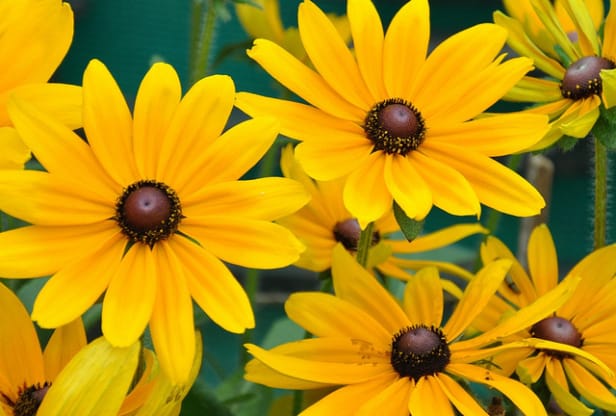Maryland’s state flower is one of the more cheerful ones. The black-eyed Susan’s vibrant yellow petals wave merrily from roadsides and gardens all over the state, their eye-catching beauty almost always drawing a smile.
Rudbeckia hirta is the genus name for Baltimore, Maryland’s black-eyed Susan, a nod to Olaus Rudbeck, professor of botany. Though distinguished in his own right, Rudbeck is also known for being an influential teacher of Carolus Linneaus, the scientist who created the botanical naming system for plants. Not all flowers called by the name of black-eyed Susans are Rudbeckia hirta—it’s a fairly common name for a number of yellow flowers with dark centers.
Black-eyed Susans are related to sunflowers and are native to most regions in North America. It became Maryland’s state flower in 1918 and thus has a prominent place in ceremonies and celebrations. In Baltimore, Maryland, the Preakness Stakes is sometimes known as "The Run for the Black-Eyed Susans" – though a look-alike is used to adorn the winning horse because the state flower is not in season.
Not only does the black-eyed Susan have look-alikes, it also has many names. Depending on region and culture the flower might be called brown-eyed Susan, yellow daisy, brown betty, or English bull’s eye, just to name a few variations. Black-eyed Susans are prized in gardens, growing up to 39 inches tall, with the wide heads sometimes reaching 18 inches wide. The dark center of the flower is usually a deep brown; select breeding has extended the color-scheme of the petals to include reds, oranges and browns.
The state flower of Maryland is not only beautiful, though. It’s been used as a medicinal aid by some, including various Native Nations. The roots are said to boost help fight colds and flu, and help boost immunity. Other parts of the plant are used as a diuretic or to make an infusion for fighting off the common cold. It’s best to do thorough research, of course, before attempting to use wild-plant remedies as some parts of plants are definitely not edible.
As cut flowers, black-eyed Susan’s make a beautiful bouquet that can last up to 10 days.


